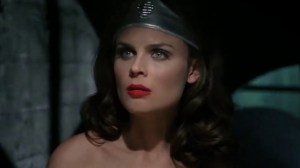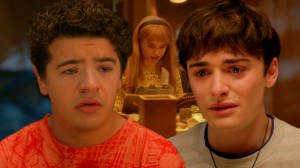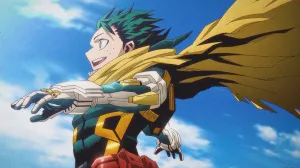The Uncanny X-Men are back. While the “From the Ashes” era of Marvel’s mutants began in July with X-Men , this week brought Uncanny X-Men (or Uncanny X-Men #701 if you prefer legacy numbering), relaunching the book that many fans consider to be the primary X-title. While Uncanny shares flagship status with X-Men and the still-to-come Exceptional X-Men, writer Gail Simone and artist David Marquez strike a decidedly different tone in Uncanny X-Men #1 from X-Men #1, furthering new X-Men editor Tom Brevoort‘s goal of having books with different goals featuring mutant teams with differing philosophies and perspectives on Xavier’s dream.
Videos by ComicBook.com
Simone brings her signature humor to Uncanny X-Men, along with the unabashedly joyous sense of sexual chemistry between couples like Rogue and Gambit. She also brings some elements less associated with X-Men runs of the past, including a shapeshifting dragon and heavy horror genre influence. There’s also a new group of mutants, the Outliers, and a new base in Louisiana for this X-Men team – Rogue, Gambit, Wolverine, Nightcrawler, and Jubilee – to operate from. ComicBook had the opportunity to talk to Simone about the first issue of the new series. You can find our conversation below.

After reading Uncanny X-Men #1, the first question I want answered is whether the horse is a mutant.
Gail Simone: Well, I’m glad that you want questions answered. However, I’ve only really teased about Jitter. She’s one of the Outliers that shows up on the doorstep of Haven. Her special mutant power is that although she has trouble concentrating and prioritizing things, she has the special ability that she can have any skill for one minute. So, she can be like a Bruce Lee-level martial artist for one minute. So, she has a watch and she sets a timer so that she knows when her one minute is up because when it’s up, she’s just back to a normal person. And that is going to be the cause of some very interesting issues for her. And the horse has a connection to the owner, but I don’t want to say what the mutant powers are. We have, of these four new characters, some of them do not even admit that they’re mutants. Some of them don’t want to be. Some of them do, and they’re just learning about what their abilities are, and we learn with them throughout the story.
You’ve teased a strong horror element to this book, and we get some of that with the stuff that takes place in the woods. But then also there’s almost an existential dread with Wolverine and this sense of death that seems to be hanging over him. Was that part of what you meant, or was it more specifically the monster-in-the-woods aspect?
Well, actually it’s both. And it only just gets ramped up more and more as we go through the issues. There’s a really horrific villain coming up.

The issue starts with a fight between the X-Men and a dragon, which is not what I was expecting. There are plenty of examples of kicking off a new X-Men series with a battle, but it usually involves Sentinels or the latest version of the Brotherhood. Where did the idea of having them fight like a dragon come from? David Marquez draws it beautifully; was it just giving him something interesting to do, or was there a deliberate attempt to swerve from the usual there?

Sadurang is the Dragon’s name, and I created him when I was writing a couple issues of Iron Man a while back, Sadurang appears in different parts of the world representing their dragons or monsters from that particular area. So that’s why Sadurang looks like he does in this one. And he definitely has a purpose, and we find that out how this battle with Sadurang affected Remy in particular. It’s really cool and I can’t wait until people see how it changes him.
When Marvel came to about writing Uncanny X-Men, did you immediately have an idea in your back pocket for X-Men that you always wanted to use, that you brought out now? Or was this very much born of conversations about where the X-Men are now after Krakoa? Can you tell me a little about how the series came about, your vision, and how it differs from what Jed MacKay is doing in X-Men?
Tom Brevoort approached me and I’ve worked with him a couple of times before on The Variants and a couple other things in the past, and he explained to me that the Krakoa era was ending and that the X-Men were going to be scattered all over, and they wanted to have a bunch of different books with different tones and different purposes and different reasons for them to exist, which right there, I’m interested because it gives the opportunity to have different tones and talk about different aspects of grief and the things that they’re going through. And he wanted Rogue to be in it, and then they wanted Jubilee to be part of the Free Comic Book Day story, and then I felt like, well, if she’s going to be part of the Free Comic Book Day story, then she should be in this book with Rogue. And then with Rogue comes Gambit, of course.
And then I started thinking about locations and how to make it different. Where would they go to grieve? How would Rogue feel about Krakoa falling? How they really needed to have a place to go to grieve and to heal. Rogue is the one who benefited a lot from Xavier’s Dream because when she showed up, she was very broken and in a very dark place, and then she saved the world and ended up with a beautiful family of the X-Men, and now a husband in Remy. And so, I just started thinking about, what that would be like and where they would go. And since Remy’s Cajun, I thought, well, why don’t we set it there, in New Orleans? And then the whole, let’s make this a Southern Gothic horror to set it apart. Rogue still believes in Xavier’s dream, and he starts making calls, trying to find someone to lead the X-Men because she still believes in it, and no one is answering the call, so she realizes that this might fall to her.

Over the years, creators have approached X-Men differently. Sometimes they focus on the mutant metaphor, and other times they focus on the evolution angle or the political aspect, or in some cases they just really like the soap opera. What is it that draws you to the X-Men?
I liked the sense of community. But honestly what has drawn me to the X-Men from the very beginning, my very first experience with them, is that I feel like everyone feels like they have something different inside of them and something weird, something maybe secret that they don’t want to reveal. And that’s what the X-Men feel like to me. And feel like they’re always having to deal with that aspect of themselves in one way or another. And I find that very relatable. It also gives us a huge variety of characters and a variety of ways to tell stories and different things we can focus on. And that’s super appealing to me as a writer.
The characters themselves often have different ideas of what the X-Men should be. Currently, it seems like Cyclops is still trying to do things on a global scale, whereas Wolverine seems very done with that approach. You mentioned that Tom Brevoort came to you and was talking about each series representing a different philosophy. Is this difference in approach among the X-Men themselves something we’re going to see play out through the book? I don’t want to say we’re heading to another Schism or anything, but how big a factor are those differences in the stories you’re telling?
Well, because Rogue believes in Xavier’s dream, and a lot of the X-Men no longer do. So that’s going to set her and this book apart quite a bit from some of the others. For instance, we have a book that takes place in Chicago where Kate just wants nothing to do with it anymore. She’s traumatized. She’s broken right now, and we’ll see if she electively sticks her toes back in. But Rogue believes in it, and so that makes her philosophy quite a bit different than X-Men and the others. She and Cyclops don’t see eye to eye on this at all.
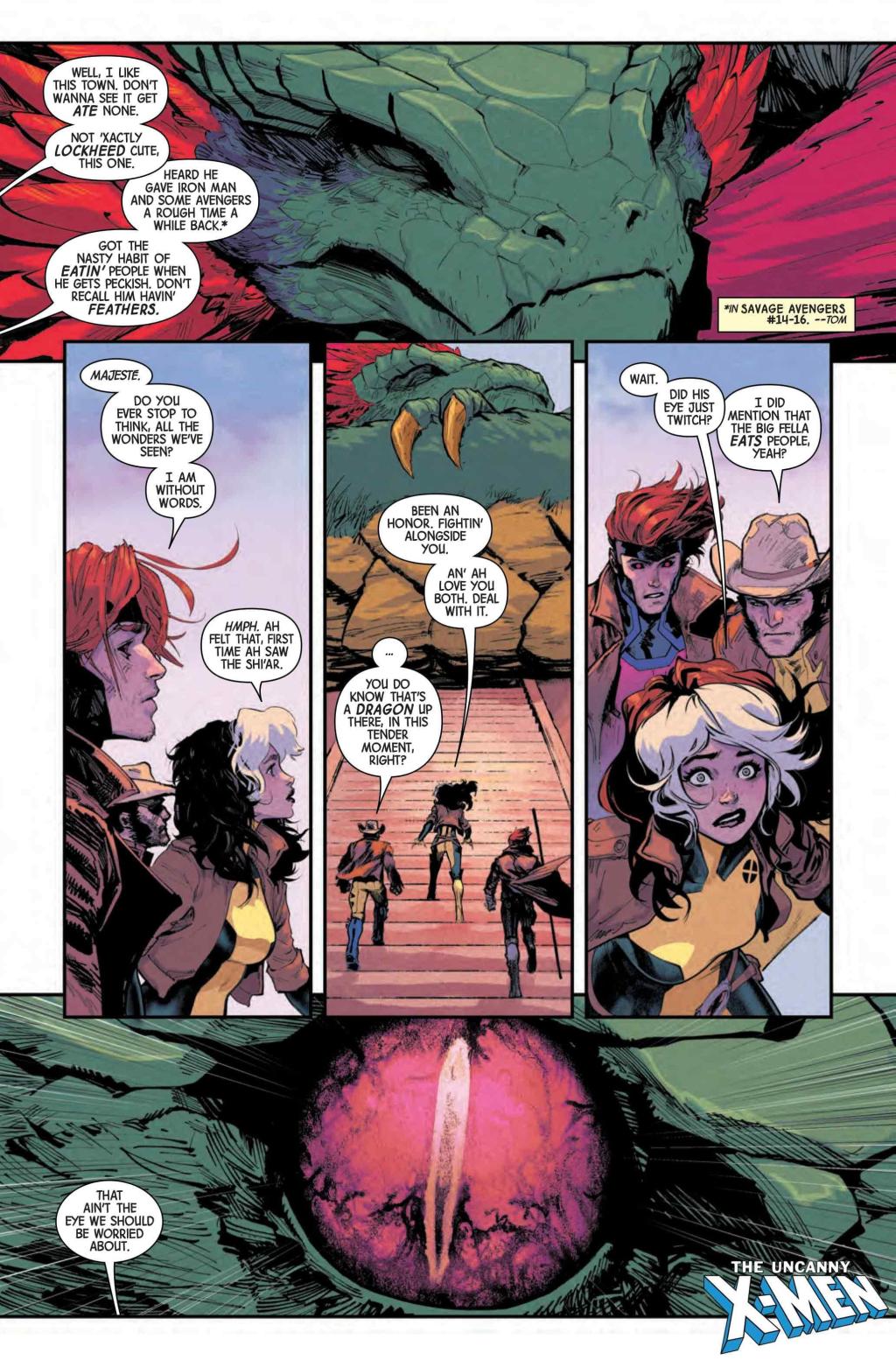
Can you tell me a bit about this new villain, Dr. Ellis? She seems interesting because she seems to be attacking the dream directly rather than mutants, physically, by going to Xavier’s Mansion and turning it into a prison. Can you talk a little bit about her and, as much as you can, her motivations, and what sets her apart from other X-Men villains?
She’s super brilliant and she wants to recruit other X-Men to her side. She’s got some things going on in Graymalkin that will be revealed over time, that her motivations are quite different than Rogue’s, for instance. And she really believes that she’s the hero out to save mutantkind. And the way she goes about it may not be agreeable to some.
So it’s almost like she’s trying to wake them up from the dream, or snap them out of it?
She wants them separated. I don’t want to reveal too much about her motivations and how that’s going to play out because that’s part of the story as we go along.
You have a reputation in your writing, one you don’t shy away from for including some, let’s call it, “frisky business,” a kind of playful sexuality in your characters. We see that in this issue, and it is certainly present in X-Men history. Given that, does it come more naturally to these characters than any others you’ve worked on?
Well, I do enjoy some frisky business in comics. But this is the book that has it. Of all the books that are coming out in the X-Men Universe, Rogue and Gambit, they’re the real deal. It’s really steamy, really romantic, really sexy. They’re put in these extreme circumstances, and it’s really fun to see how that affects their relationship and all those things. But it’s definitely there, and I wanted it to be there from the very beginning of talking about the book.
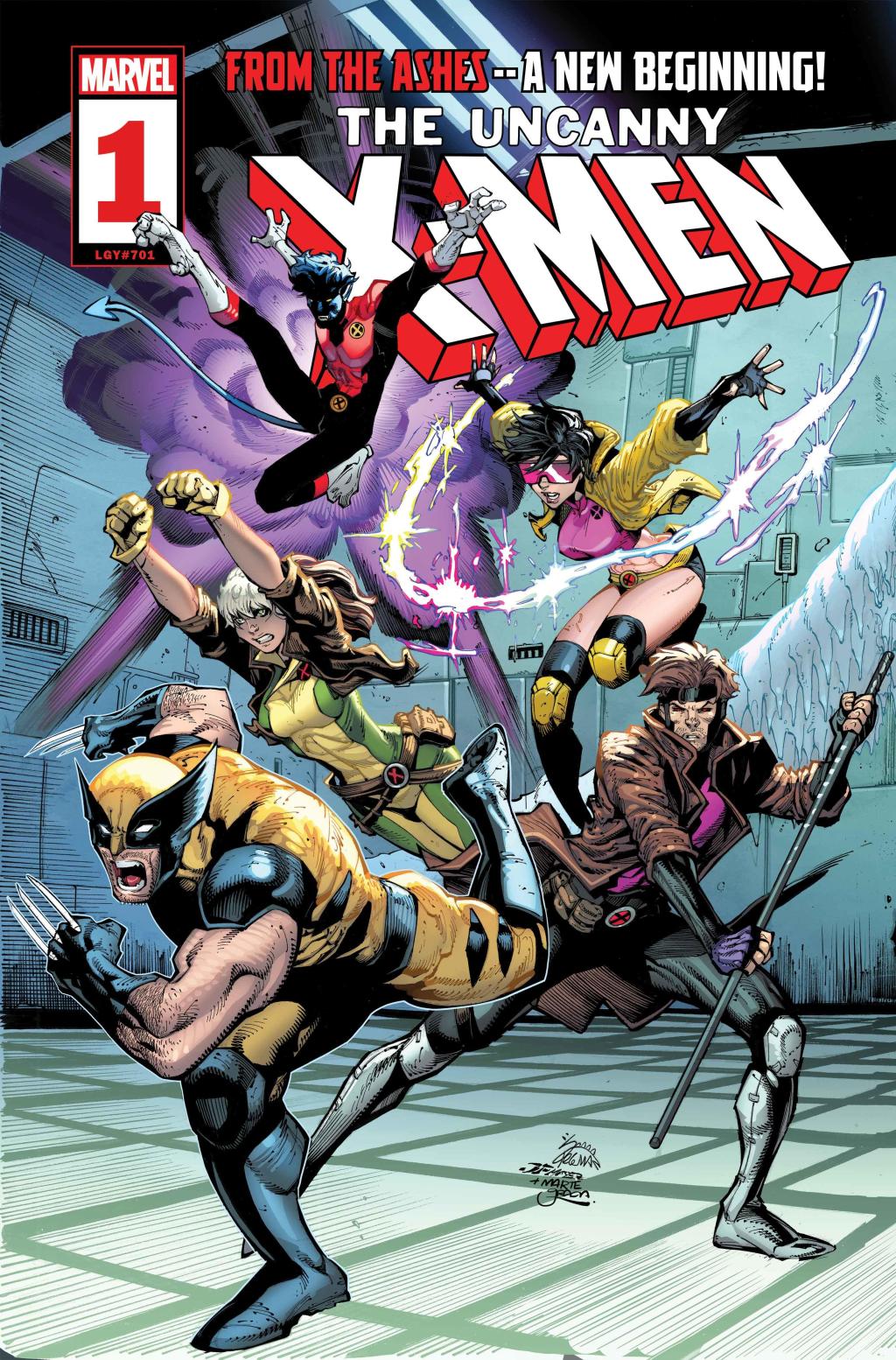
It seems to me that you ended up with the most classic lineup of X-Men characters among the “Frome the Ashes” books. You touched on it already, but can you talk a little bit about how you put that roster together, what you were looking to do, and what roles you were trying to fill with your team?
Well, basically my number one goal was to throw out the welcome mat and make it easy to jump into it. So, they’re pretty recognizable characters, but once you have Rogue, then you have to have Gambit, and then Jubilee came about because of the free comic book story. But then if you have Rogue, you’ve got to have Nightcrawler and then Wolverine, because Gambit and Rogue are the heart of the book, and Jubilee and Nightcrawler are the joy, and then Wolverine’s the grit, and that’s how I put that team together. And then when the Outliers show up, it just puts everything in chaos.:
Speaking of the Outliers, I know you don’t want to say too much yet, but is there anything in X-Men history that you would compare them to? I feel like the initial assumption might be that this is the new class of young mutants, so to speak, but maybe that’s not the case.
Well, first of all, we don’t know if they’re good or bad. We don’t know which side of that they fall on yet. And I wanted to give them what I call invisible mutations, which we’ll compare to an invisible disability so that when you look at them, you cannot tell they’re mutants. It’s not like they have blue skin or claws that pop out. So that’s one of the reasons why some of them may deny that they are mutant at all because it just doesn’t seem like the other mutants that are around. They have more modern, today-type problems.
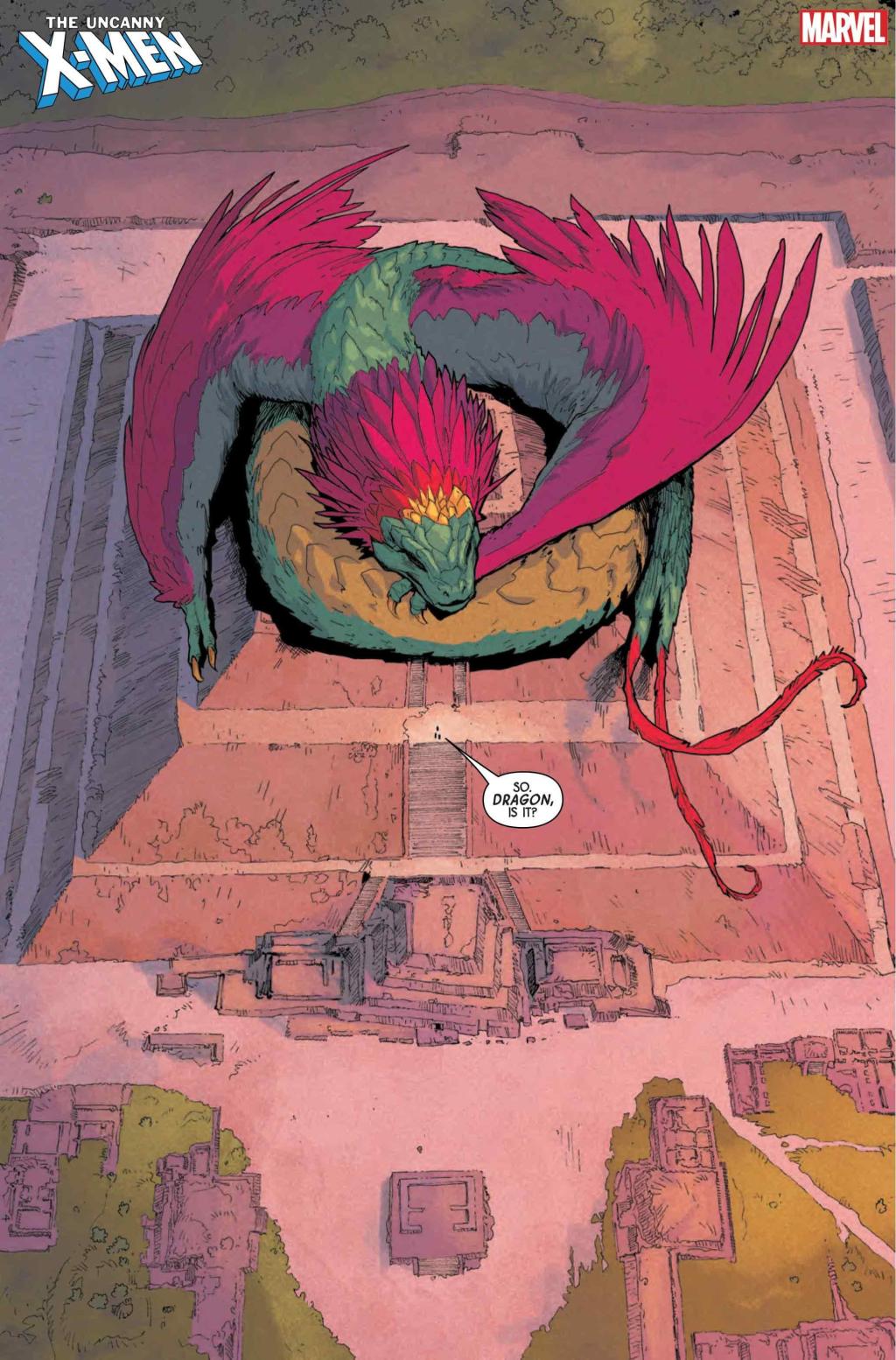
The X-Men have had a lot of home bases, and every fan has their favorite, whether they’re gung-ho about the Outback Era, or partial to the school, or whatever else. Now they have a new base, Haven, in Louisiana. You’ve talked about it being a Southern Gothic book. What does that mean for the tone of the book, and the atmosphere you are trying to achieve with David Marquez and everybody else working on the book? What’s the Louisiana flavor?
Well, I want it to feel very grounded. Gambit takes Rogue to Haven, which is a house that he lived in that he felt safe in when he was younger. And they have a pledge that anyone is welcome there and they’ll take in orphans. But there was some really scary stuff in the woods. Really, really scary. But also, it’s fun too, because there’s no mansion and no school, no anything anymore, and they set up a Danger Room in the woods so they can train eventually. So it’s really fun, but then there’s something extremely scary in those.
I know you can’t say much, but “Endling” is a word that comes up very ominously. Any hints or teases about what that means for this X-Men team?
“Endling” means it’s the last of a species. So, we have someone who wants to be the last of the species of mutants, and that’s probably all I should say.
That sounds like it’s probably not good for them.
It might become an issue.
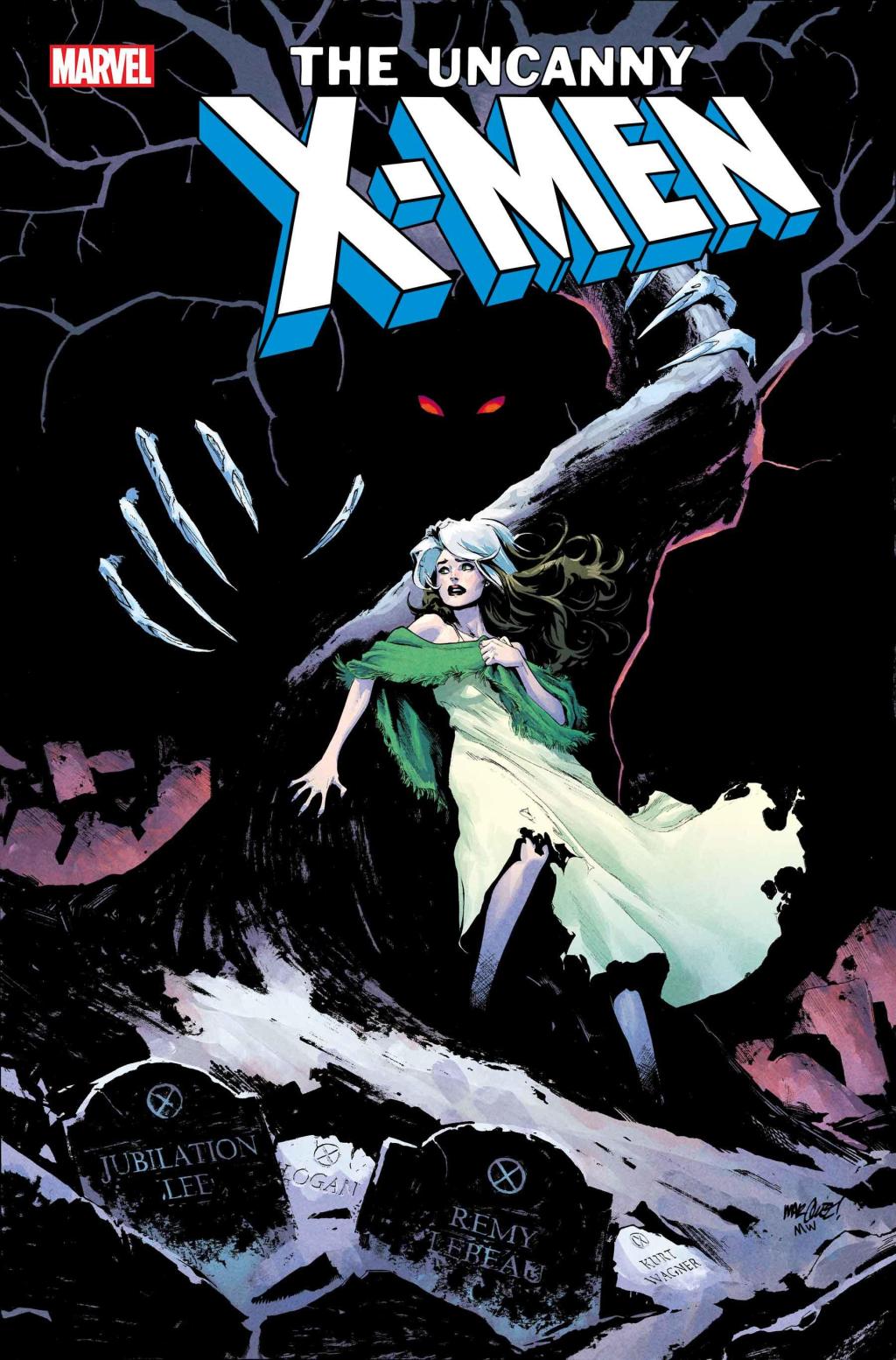
Even with the big dragon fight scene, this book feels very character-focused and conversational throughout. That really comes out most in the scene at the hospital, when the X-Men visit a dying mutant child just as tragedy happens. Can you talk me through that scene a bit, as it feels like the kind of scene that’s become increasingly rare in modern superhero comics as the focus has shifted to bigger operatic superhero stuff and less “downtime.”
So there’s a few things. I’m planting seeds for future story bits, and also Rogue is really low after Krakoa falls, and this makes her even lower. And if you see my past work, you can see that I like to take characters down to the bottom and then build them back up. So hopefully Rogue will be on that path. But I think one of the directives that Tom gave me was, “I want you to break people’s hearts and make them cry.” So, I was like, “Yes, sir, I think I can do that, but can I also make them frisky and scared and all these other emotions?” He’s like, “Yes, but you got to break their hearts.” So, there we go.
Are there any last teases or anything else you’d want to say to anybody reading this before we finish?
I cannot say enough about David’s art, how he’s interpreted the script, and how beautiful it is. And the cover to #4, where Rogue is in that gothic horror pose. It’s just so creepy and so amazing.
Uncanny X-Men #1 is on sale now.

